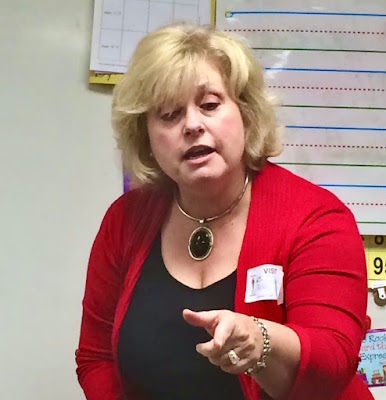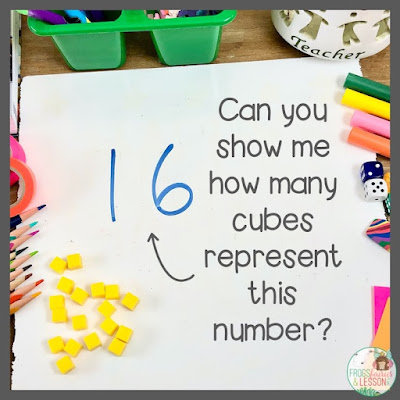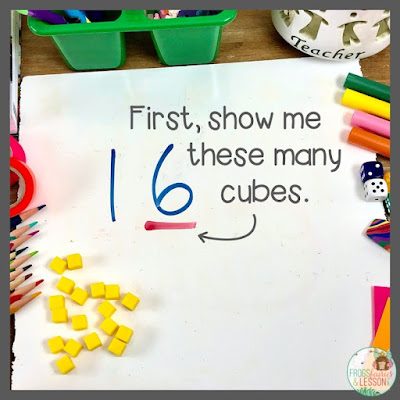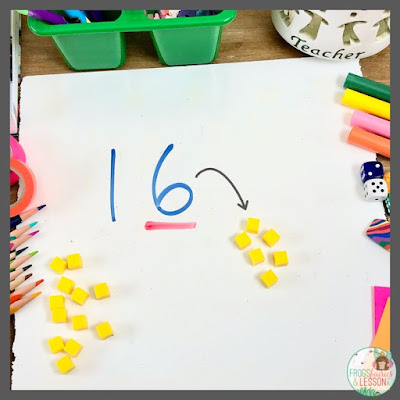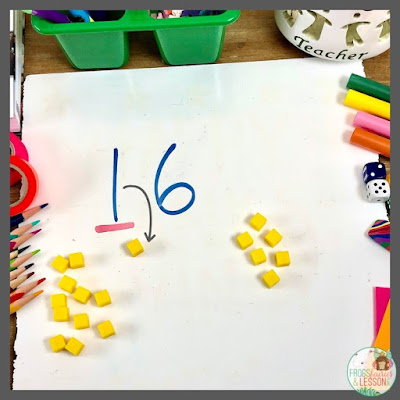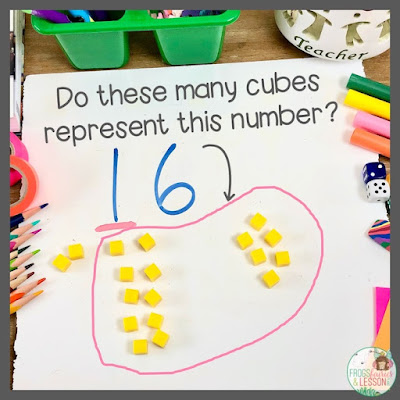Have you taught Place Value to your students?
Do they know about the ones place and the tens place, and about the value of each digit in a number? Can they make a number with "these many ones and these many tens"? Can they represent a number with cubes and rods of the Base Ten Blocks? Great!
Then you are ready for this next activity that I learned with Sherry Parrish, author of Number Talks. Sherry visited our school a few years ago, and worked with a few of our 1st Grade students.
The activity she did with our students, and that I am about to teach you, helped me guide my students into a deeper understanding of what numbers really mean.
Here's the activity, step-by-step:
1. Sherry wrote the number 16 on a white board and put ones cubes next to it. She asked a student to help her represent a number using cubes.
2. She underlined the digit 6 and asked the student to show her "this many cubes" as she pointed to the 6.
As your students probably will, my students dragged 6 cubes to represent the 6.
3. Next, Sherry underlined digit 1 and asked the student to show her "these many cubes".
I'll pause here and let you take in this moment.
This was the moment I knew my students would do exactly what they did, and my heart sank.
I knew that all the talking about ones and tens, and place value, and blah, blah, would just not stand this test.
And it didn't...
When faced with this question WITHOUT the language they were trained to recognize, "digit one" became "number 1".
4. To guide students to self-correct, Sherry put it in perspective for them.
Some kids giggled and were able to go back and fix their mistakes.
But many, MANY kids had no idea of what had gone wrong.
This was a big eye-opening moment for me, and it led me to become very intentional about how I teach Place Value.
I hope you'll feel compelled to try this activity with your class. If you do, here are some takeaways I started implementing right away.
Takeaways:
1. Deliberately explain that digits are symbols, and numbers represent amounts.
Help your students make the distinction between the "digit one" and the "number 1". The number 1 always represents one object. The digit one will represent different amounts depending on the place it takes in a number.
2. Add this activity to your Calendar Math, RTI, Morning Meeting, or Small Group lessons.
3. Revisit the activity throughout the year using different numbers, and reteach the students who still seem confused.
*** Here is another Number activity! ***
Additional Resources - With FREE SAMPLES!
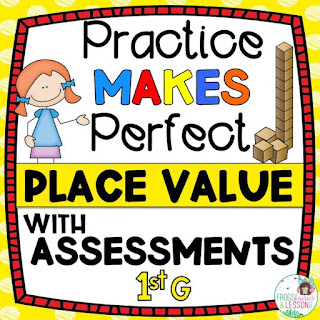 |
| View preview here. |
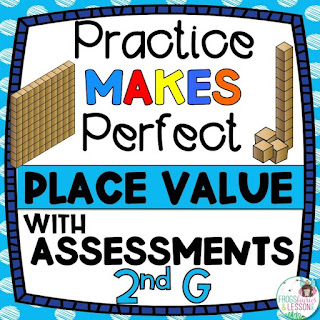 |
| View preview here. |
 |
| View preview here. |
 |
| View preview here. |

